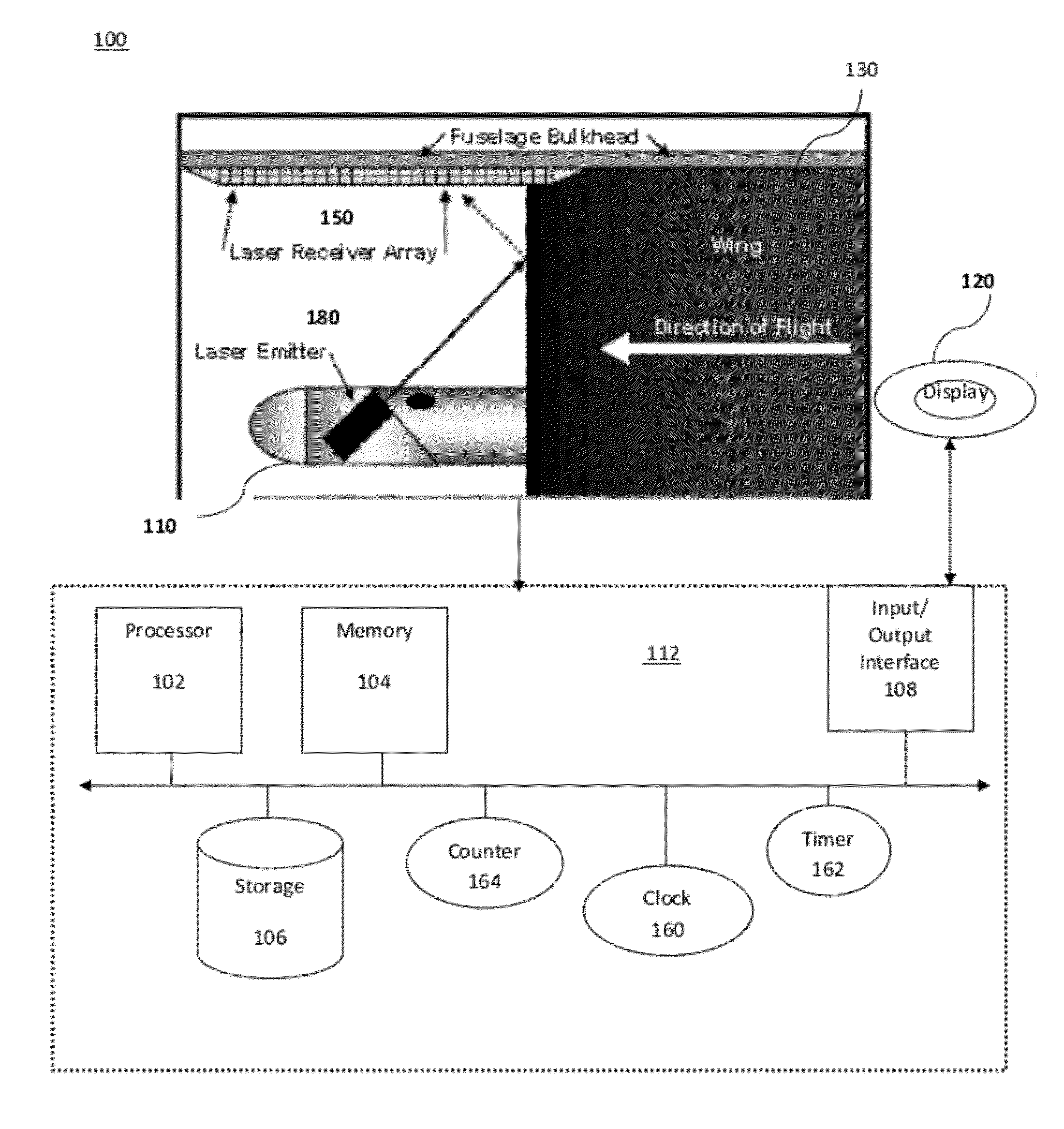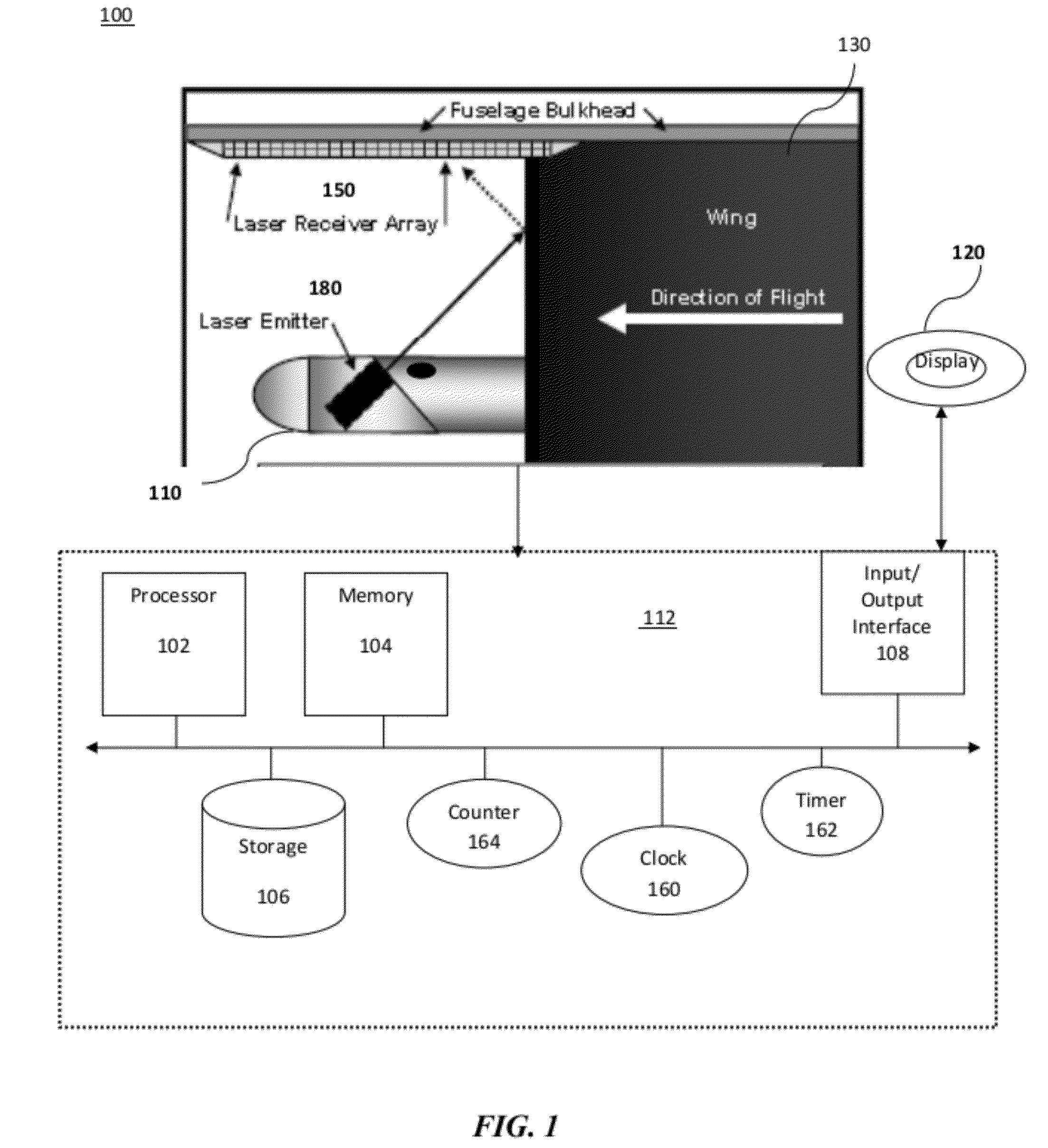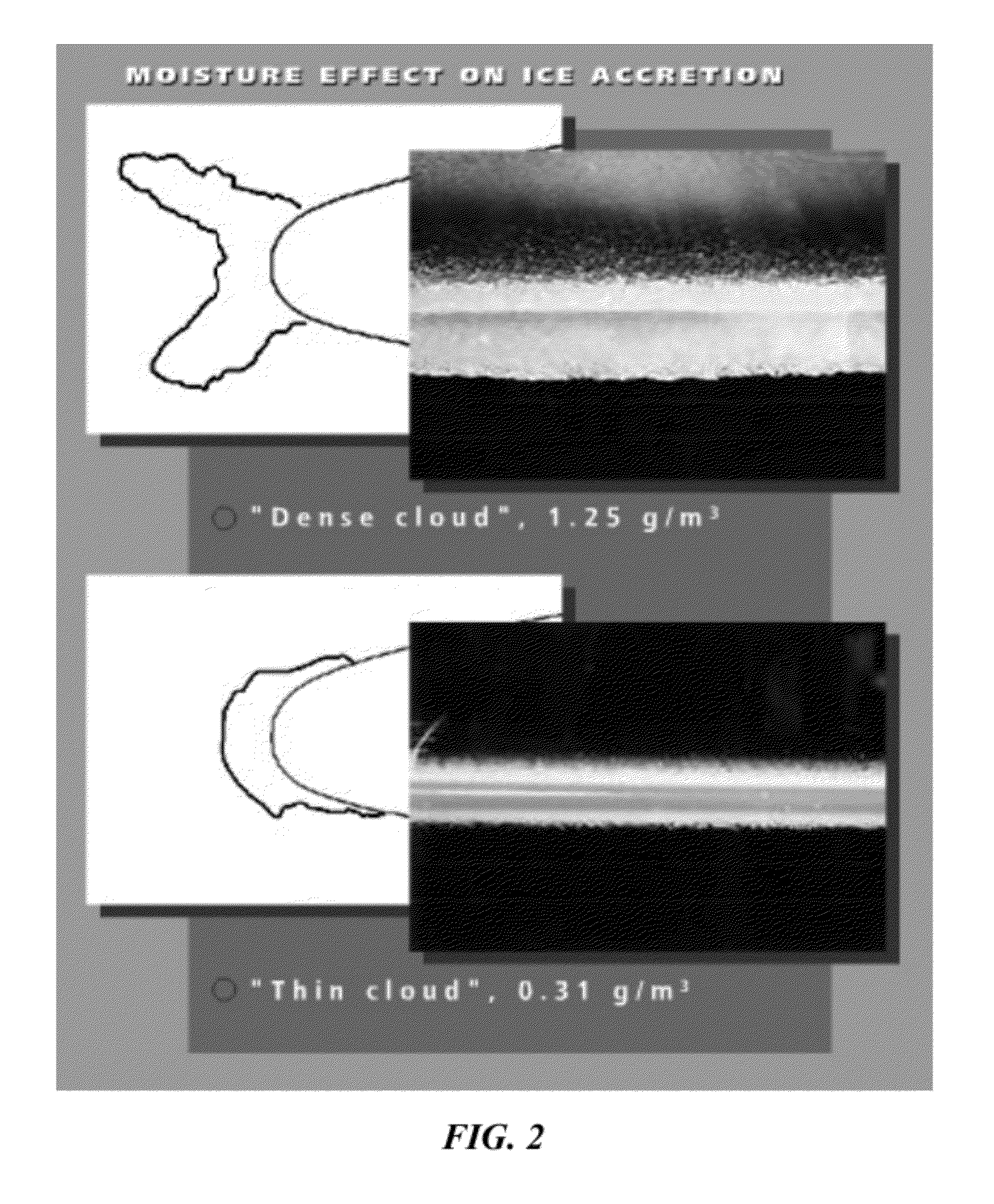Aircraft icing detector
a technology for detecting aircraft and ice, which is applied in the direction of material analysis, instruments, transportation and packaging, etc., can solve the problems of no simple, cost-effective system, and no system to provide feedback to the pilo
- Summary
- Abstract
- Description
- Claims
- Application Information
AI Technical Summary
Problems solved by technology
Method used
Image
Examples
Embodiment Construction
[0049]We describe a system, apparatus, and method for providing a laser-enabled “airframe contamination” alert to provide information on the amount and shape of an accumulation of surface contaminants such as ice or frost, on an airfoil as well as details of the surface contamination event. The system, apparatus, and method are suitable for use in general aviation (private), military, corporate, and commercial aircraft. Embodiments of the invention can also be advantageously employed with unmanned aerial vehicles (UAV).
[0050]An embodiment of the system combines a laser-based surface contaminant detection device with a pilot display to warn pilots of the initial formation of airframe contaminants. The notification and details of the surface contamination event can also be down-linked to the Federal Aviation Administration (FAA) or other agencies via various existing radio frequency (RF) links.
[0051]In the following description, numerous specific details are set forth by way of exempl...
PUM
| Property | Measurement | Unit |
|---|---|---|
| distance | aaaaa | aaaaa |
| depth | aaaaa | aaaaa |
| depth | aaaaa | aaaaa |
Abstract
Description
Claims
Application Information
 Login to View More
Login to View More - R&D
- Intellectual Property
- Life Sciences
- Materials
- Tech Scout
- Unparalleled Data Quality
- Higher Quality Content
- 60% Fewer Hallucinations
Browse by: Latest US Patents, China's latest patents, Technical Efficacy Thesaurus, Application Domain, Technology Topic, Popular Technical Reports.
© 2025 PatSnap. All rights reserved.Legal|Privacy policy|Modern Slavery Act Transparency Statement|Sitemap|About US| Contact US: help@patsnap.com



